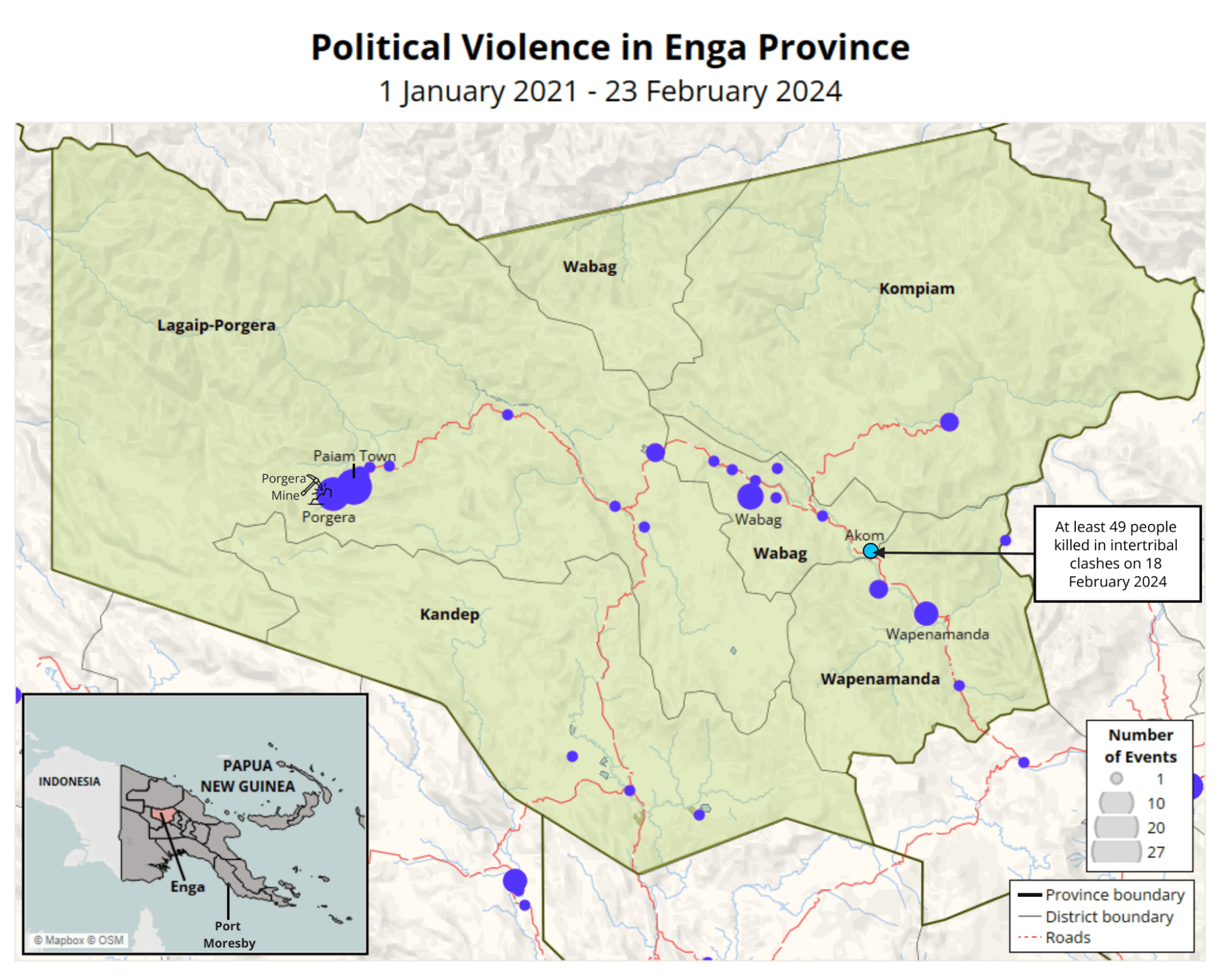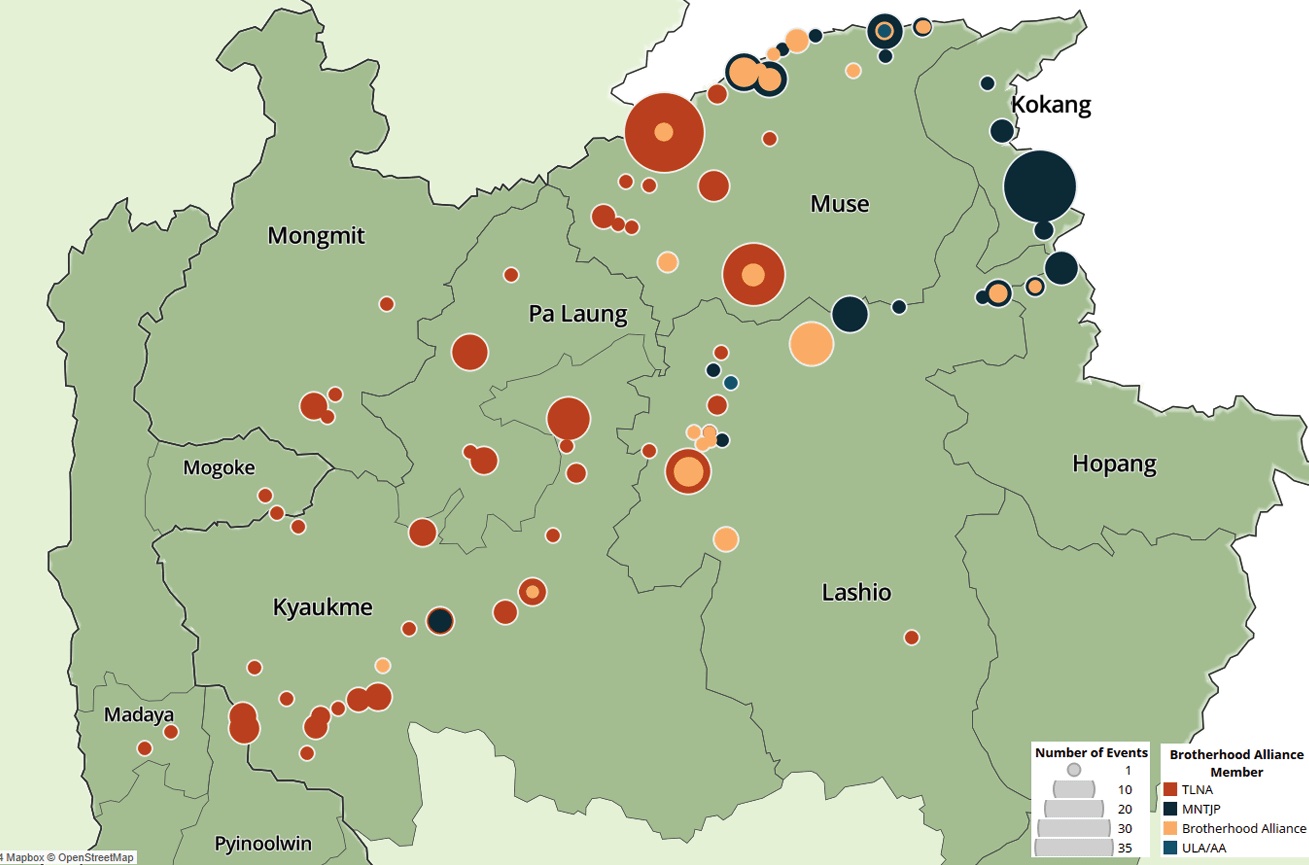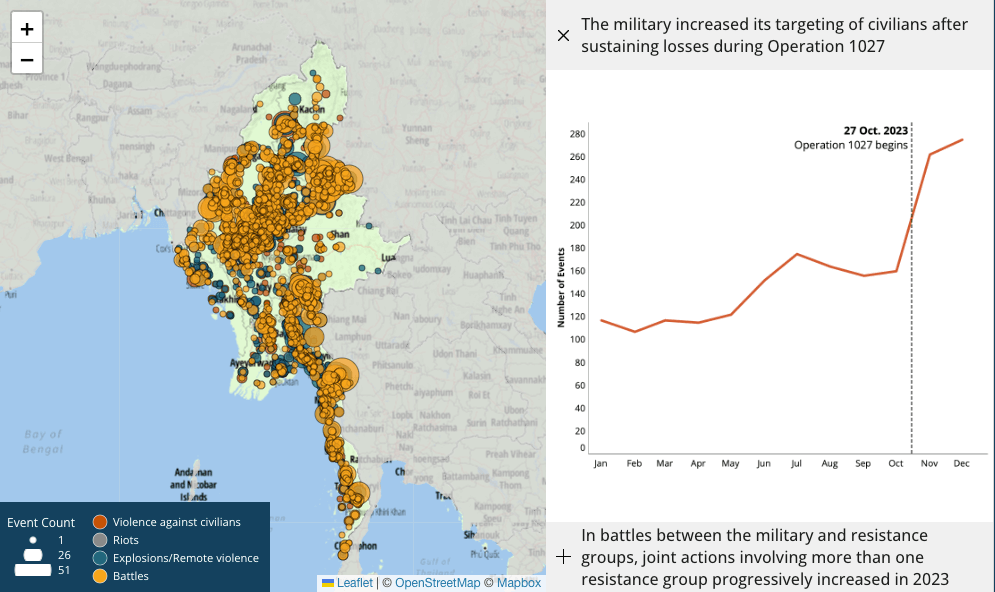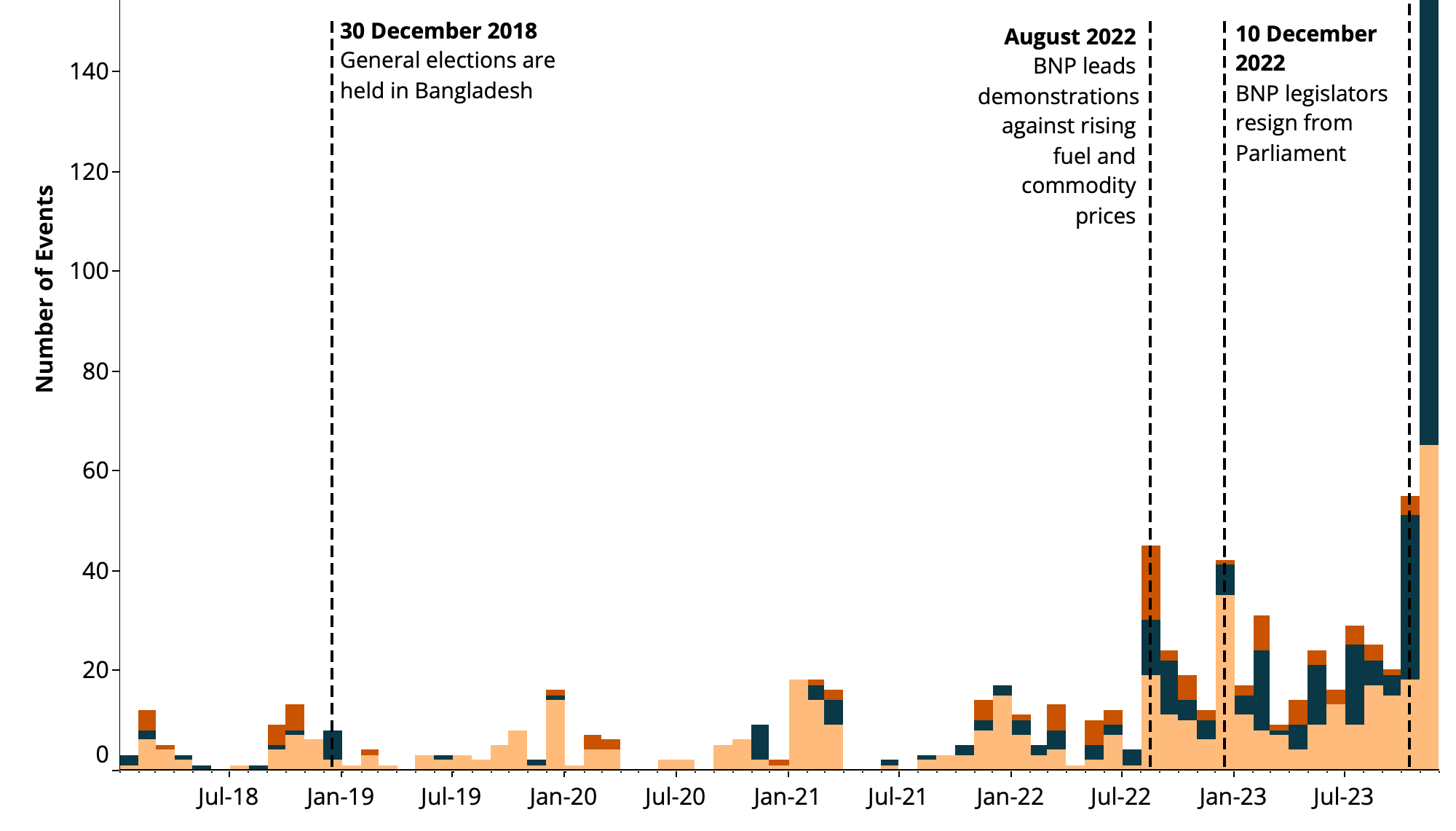Asia-Pacific
India Votes 2024: Economic Discontent Deepens Ethnic Divisions Ahead of Elections
10 April 2024
Sectarian and ethnic tensions are rising in the run-up to the elections in India, as economic anxieties increase the pressure on the country’s caste and ethnicity-based affirmative action policies.
Read MoreQ&A: The Worsening Trend of Violence in Papua New Guinea
27 February 2024
Q&A with Deborah Alois ACLED Pacific Region Researcher On Sunday, 18 February, intertribal violence in the remote Highlands of Papua New Guinea resulted in the death of at least 49 people. This is the worst death toll in an escalating cycle of violence and political unrest in the past year. In this Q&A, Deborah Alois,…
Read MoreMyanmar: Momentum from Operation 1027 Threatens Military Rule
1 February 2024
Since launching Operation 1027 on 27 October 2023, the Brotherhood Alliance, alongside anti-coup forces, has made some of the most significant territorial gains since the 2021 coup, seizing military and police positions in Chin, Rakhine, northern Shan, and Mandalay
Read MorePolitical Repression and Militant Targeting Set the Stage for Pakistan’s 2024 Elections
1 February 2024
After nearly two years of political turmoil, Pakistan is set to hold elections for its national and provincial assemblies on 8 February.
Read MoreConflict Watchlist 2024 | Myanmar: Resistance to the Military Junta Gains Momentum
17 January 2024
Despite multiple setbacks, fighting between the Myanmar military and resistance forces is likely to continue in 2024. The NUG’s strategy of “all roads lead to Nay Pyi Taw” has led the military to take action to further fortify the capital, increasingly under threat of infiltration from the resistance forces.
Read MoreThe Violent Politics of Bangladesh’s 2024 Elections
4 January 2024
Violence has already been on the rise in the months leading up to Bangladesh’s 7 January elections, in which Prime Minister Sheikh Hasina will seek re-election for the fourth consecutive term.
Read More






